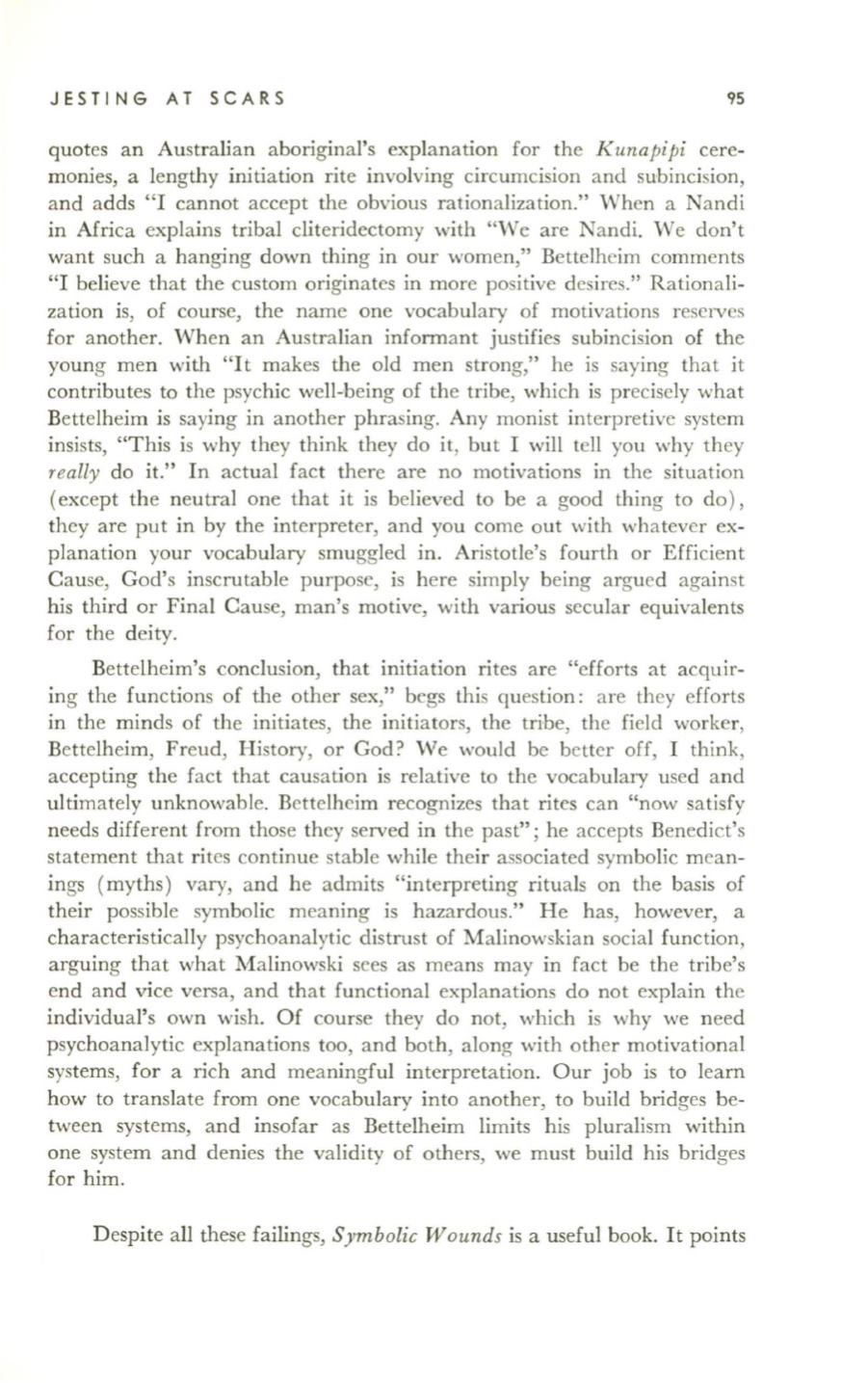
JESTING AT SCARS
95
quotes an Australian aboriginal's explanation for the
Kunapipi
cere–
monies, a lengthy initiation rite involving circumcision and subincision,
and adds "I cannot accept the obvious rationalization." When a Nandi
in Africa explains tribal cliteridectomy with "We are Nandi. We don't
want such a hanging down thing in our women," Bettelhcim comments
"I believe that the custom originates in more positive dcsires." Rationali–
zation is, of course, the name one vocabulary of motivations reservcs
for another. When an Australian informant justifies subincision of the
young men with
"It
makes the old men strong," he is saying that it
contributes to the psychic well-being of the tribe, which is precisely what
Bettelheim is saying in another phrasing. Any monist intcrpretive system
insists, "This is why they think they do it, but I will tell you why they
really
do it." In actual fact there are no motivations in the situation
(except the neutral one that it is believed to be a good thing to do),
they are put in by the interpreter, and you come out with whatever ex–
planation your vocabulary smuggled in. Aristotle's fourth or Efficient
Cause, God's inscrutable purpose, is here simply being argued against
his third or Final Cause, man's motive, with various secular equivalents
for the deity.
Bettelheim's conclusion, that initiation rites are "efforts at acquir–
ing the functions of the other sex," begs this question: are they efforts
in the minds of the initiates, the initiators, the tribe, the field worker,
Bettelheim, Freud, History, or God? We would be bctter off, I think,
accepting the fact that causation is relative to the vocabulary used and
ultimately unknowable. Bettelheim recognizes that rites can "now satisfy
needs different from those they served in the past"; he accepts Benedict's
statement that rites continue stable while their associated symbolic mean–
ings (myths) vary, and he admits "interpreting rituals on the basis of
their possible symbolic meaning is hazardous." He has, however, a
characteristically psychoanalytic distrust of Malinowskian social function,
arguing that what Malinowski sces as means may in fact be the tribe's
end and vice versa, and that functional explanations do not explain the
individual's own wish. Of course they do not, which is why we need
psychoanalytic explanations too, and both, along with other motivational
systems, for a rich and meaningful interpretation. Our job is to learn
how to translate from one vocabulary into another, to build bridges be–
tween systems, and insofar as Bettelheim limits his pluralism within
one system and denies the validity of others, we must build his bridges
for him.
Despite all these failings,
Symbolic Wounds
is a useful book. It points


